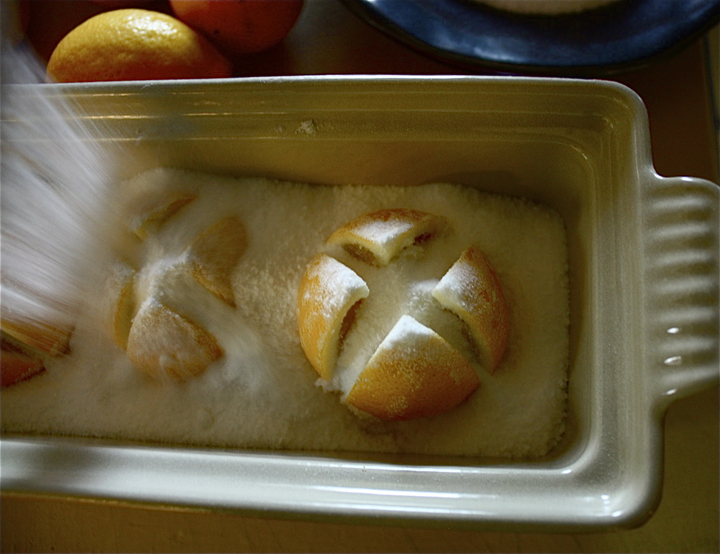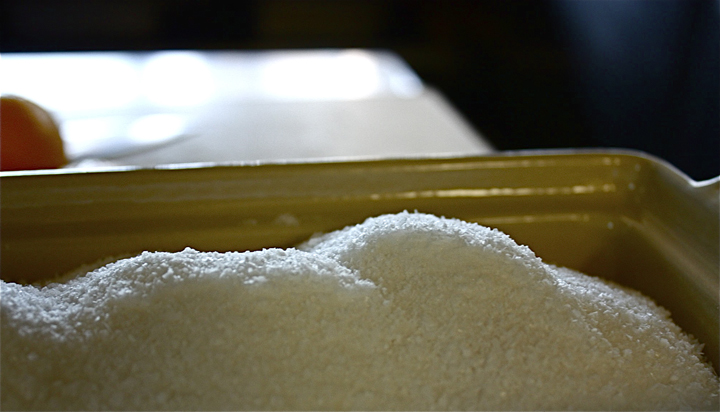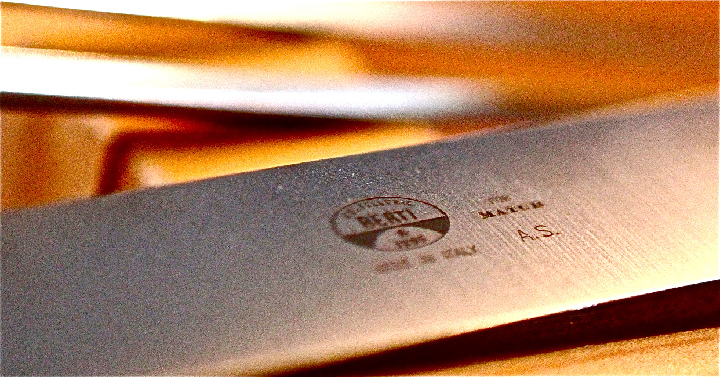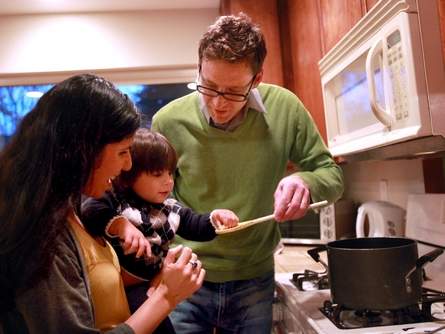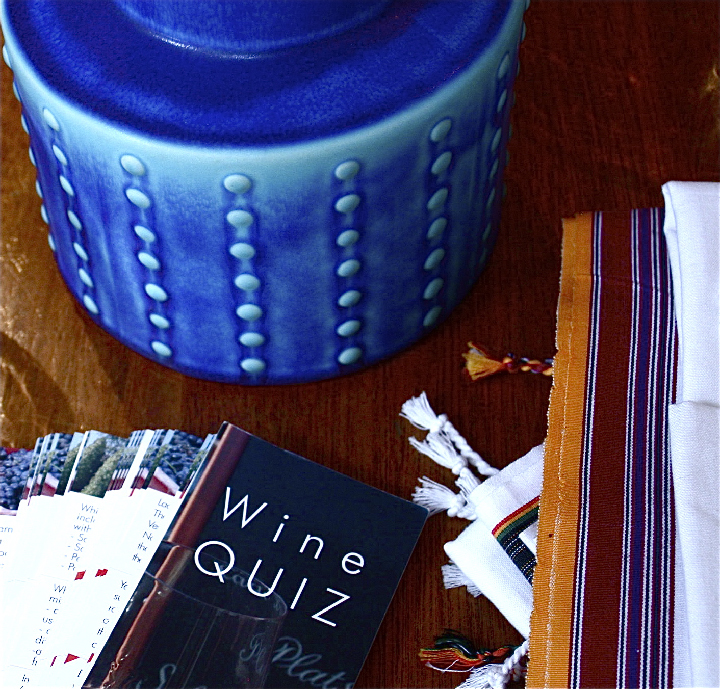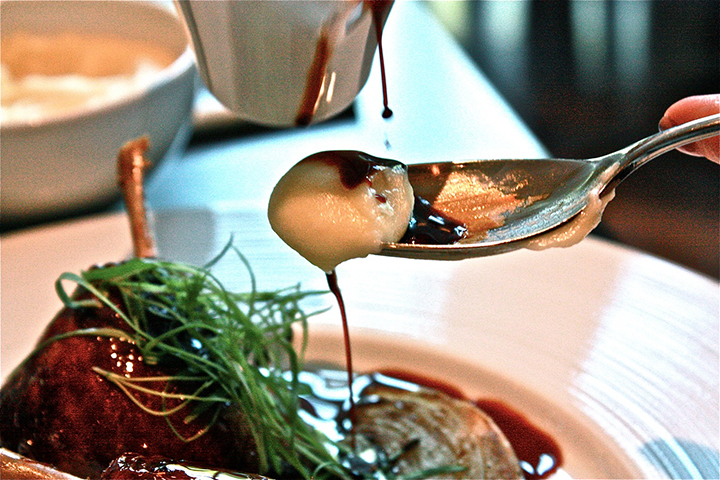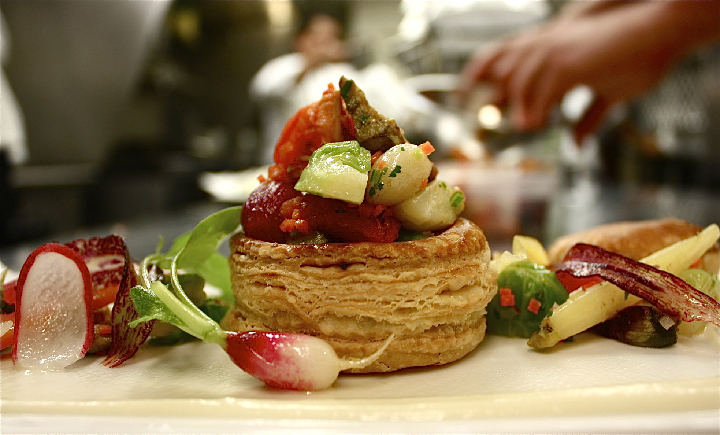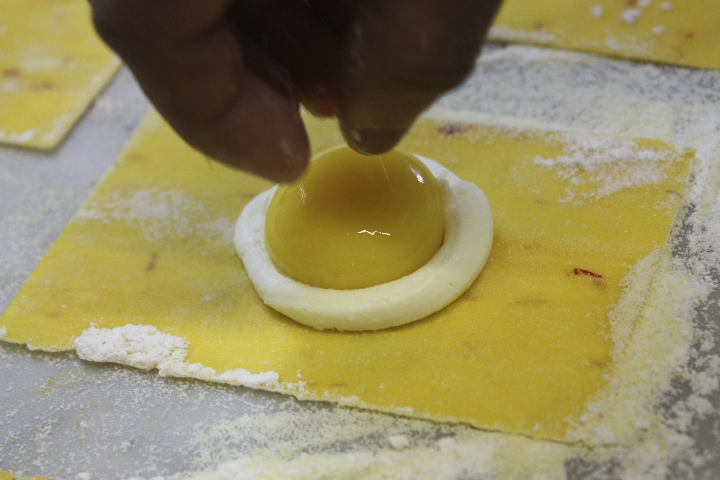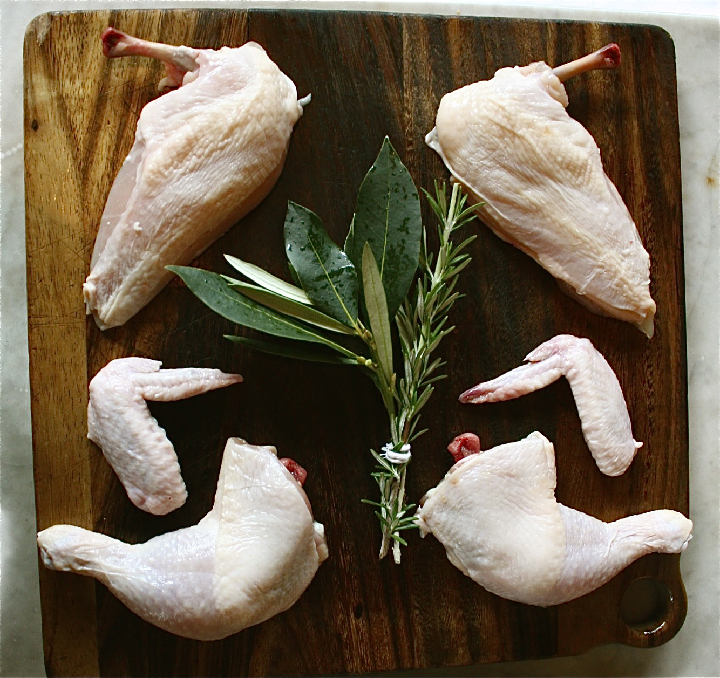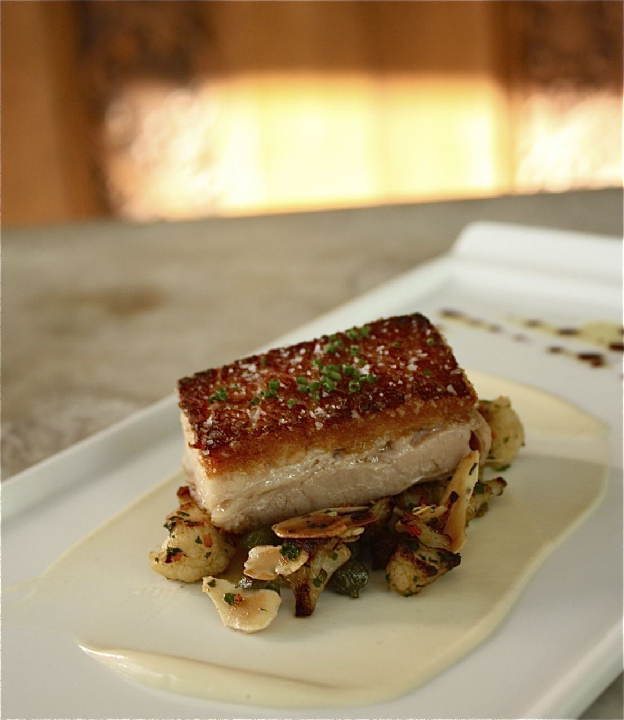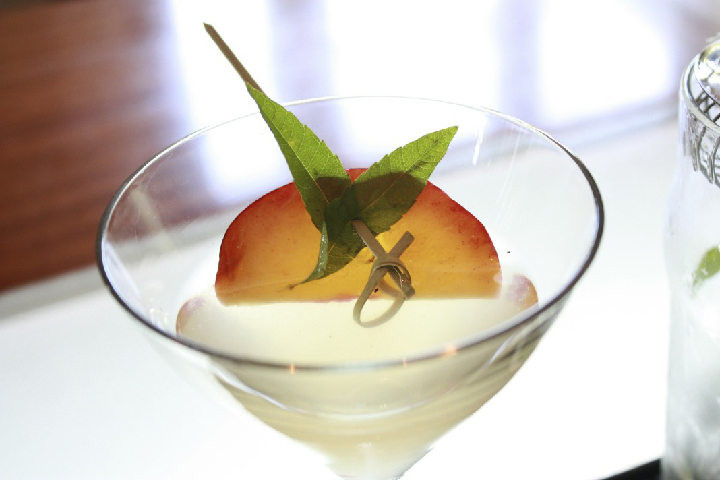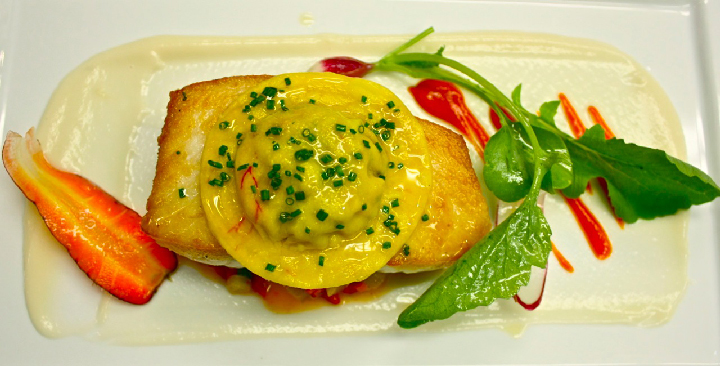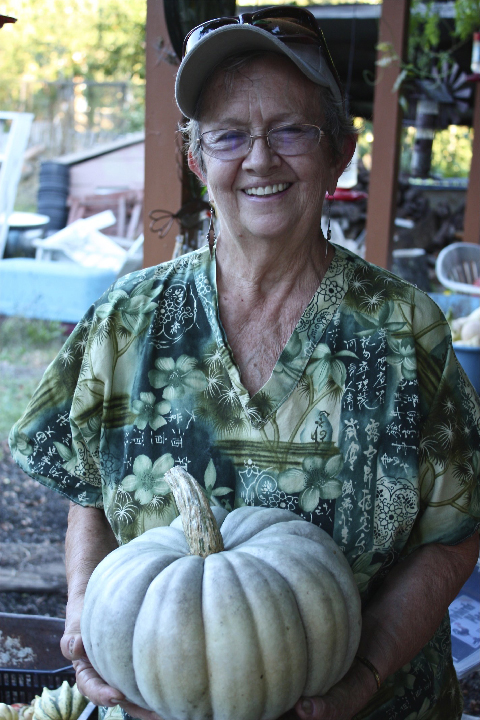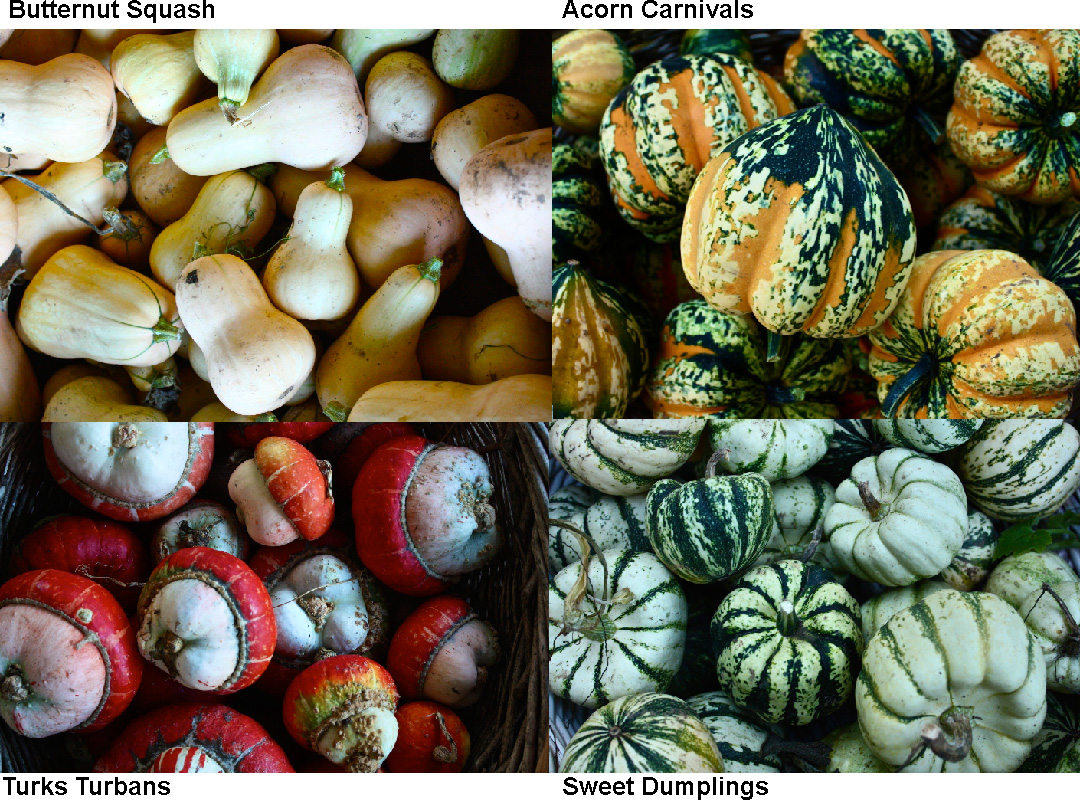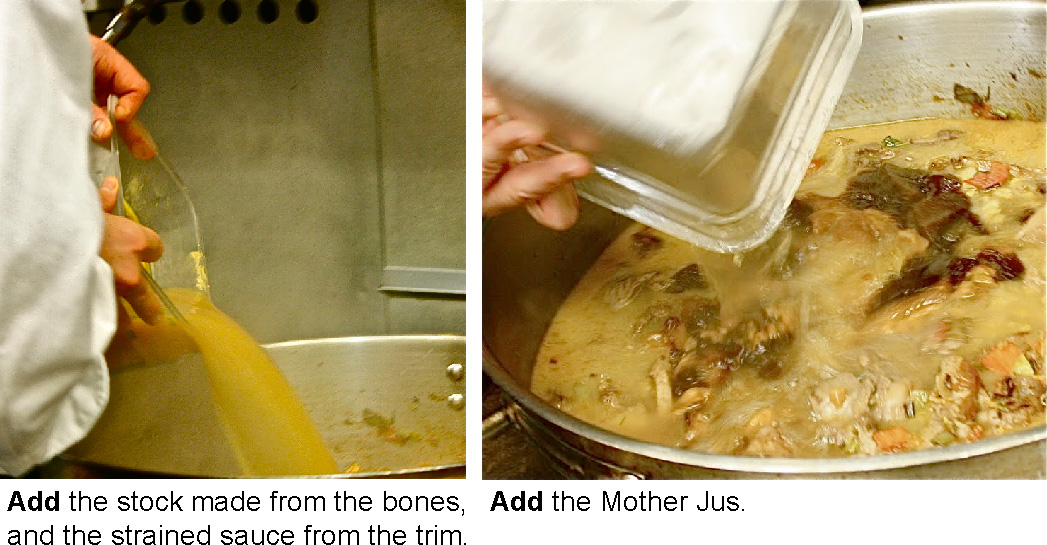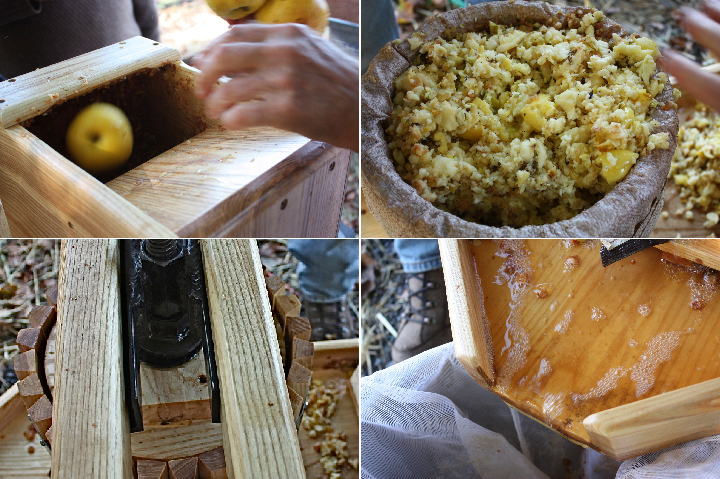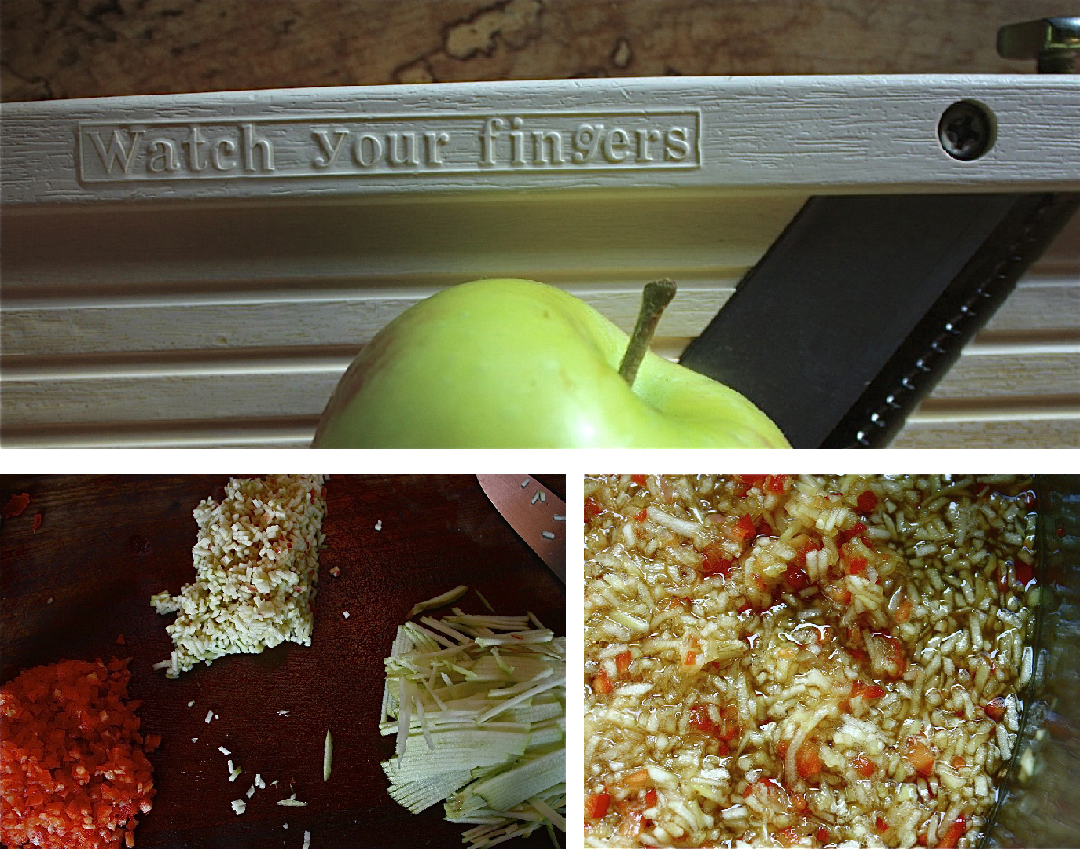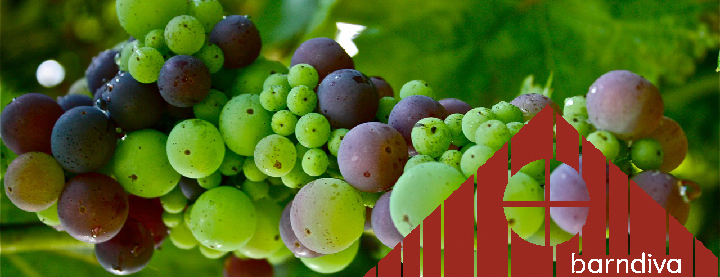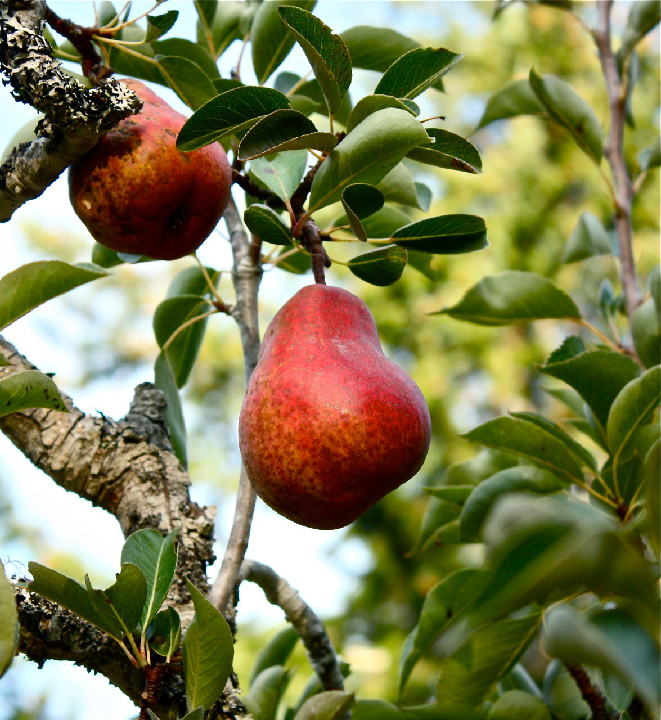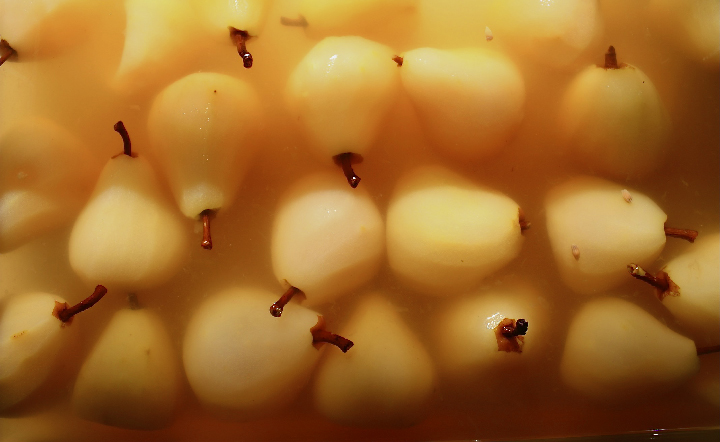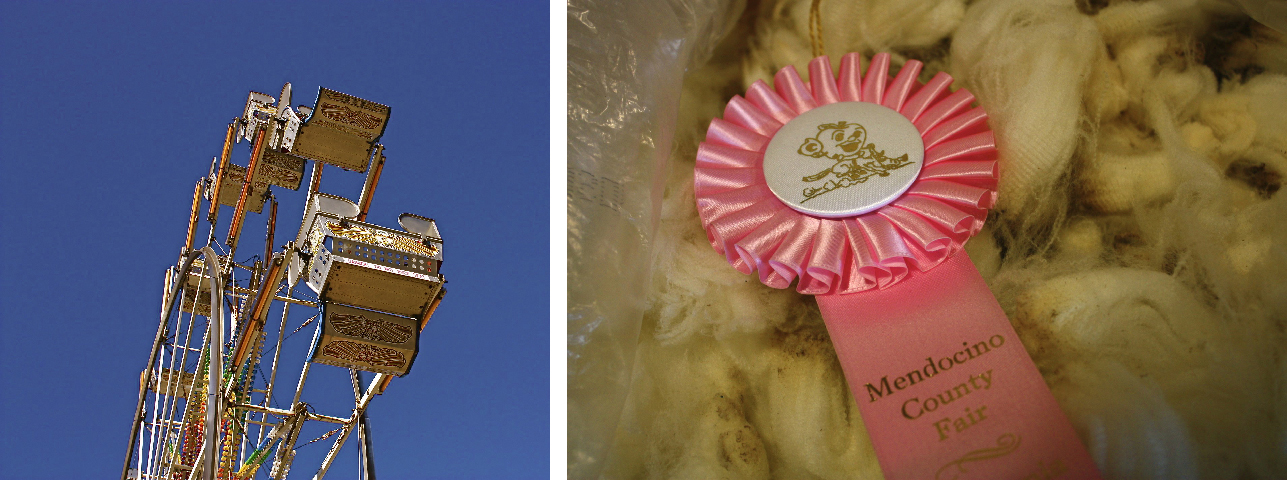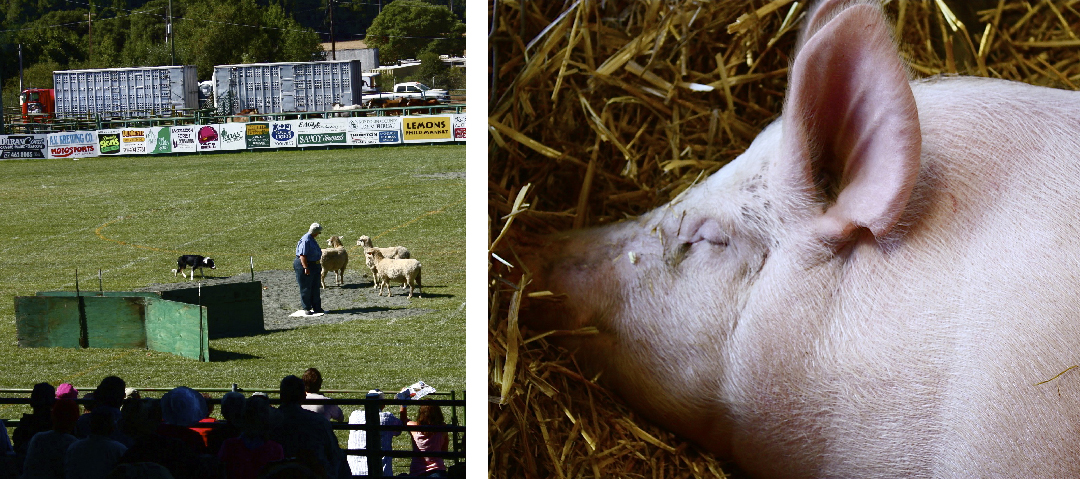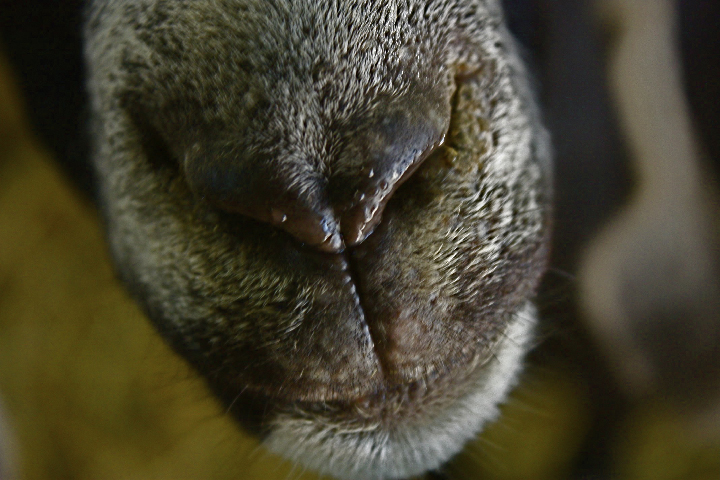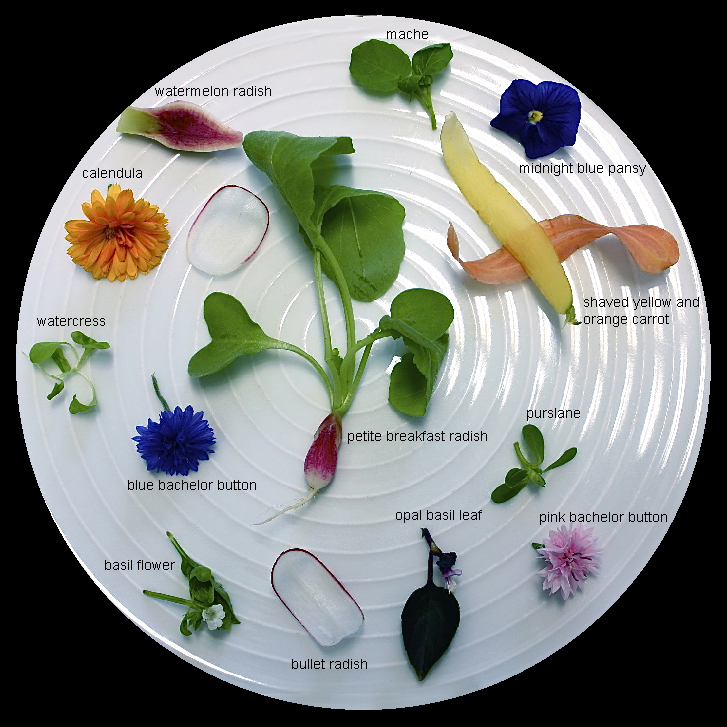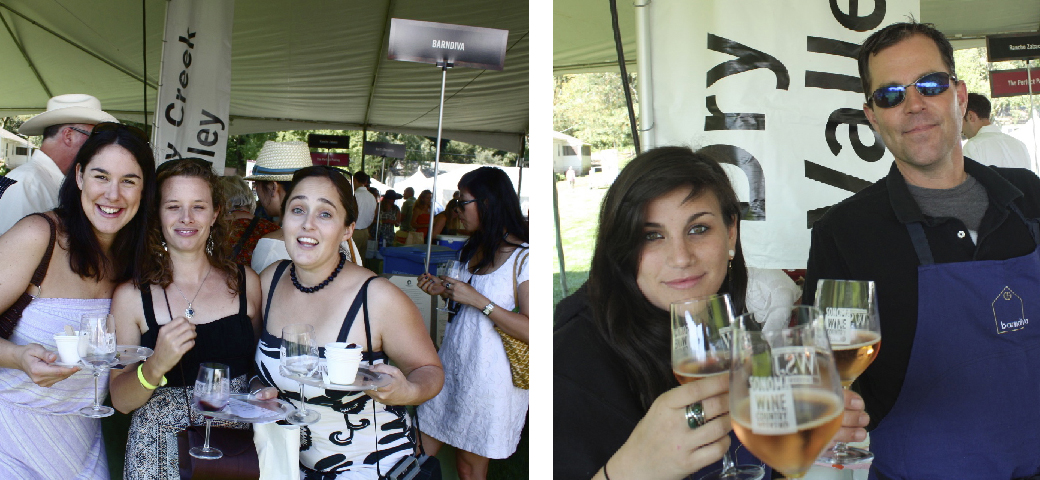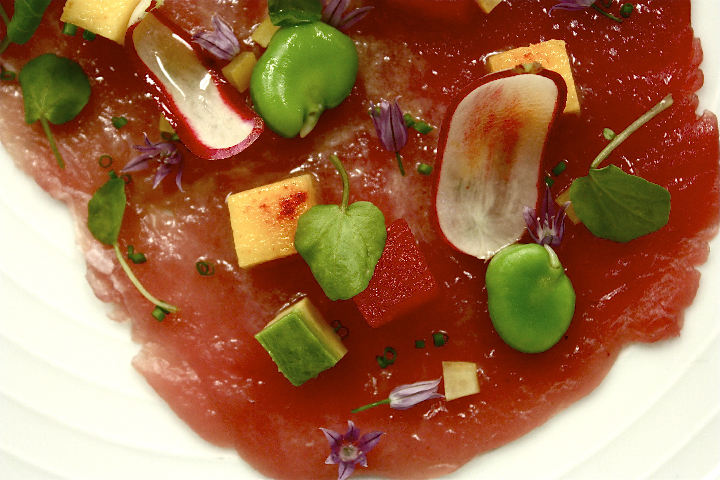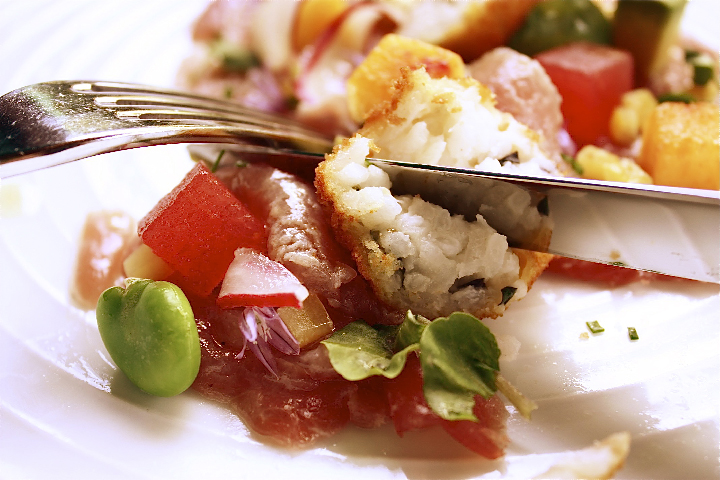
Dish of the Week
Early Bird Omelet with Caviar Crème Frâche

I think it was Julia Child who once said the single hardest dish she ever mastered was “a perfect omelet,” but I bet more than one great chef would proffer the same reply. Ryan, who’s both intuitive and technique driven in equal measure, believes the secret to a light, fluffy and oozy omelet lies in patiently stirring over constant heat, and while this is true, it's only part of the equation. Even if you start with great eggs (ours were from Early Bird's Place), the right pan, and a perfected wrist action that keeps the eggs from scorching, making the perfect omelet is no walk in the park. If anything it’s a dance. One whose music you need to listen to long and hard before you know the rhythm well enough to move to it gracefully.
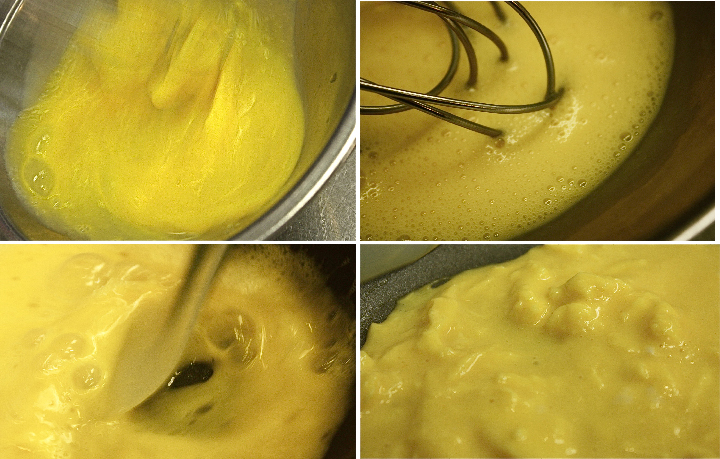 To the extent that science plays a role, for an omelet that’s smooth as silk on the outside but filled with creamy wet curds, don't be tempted to mix dairy into the eggs. Though it seems counter-intuitive ~ cream should make something more creamy, not less ~ eggs don't need anything to bind to themselves, in fact, any ingredients you add will affect the omelet's ultimate viscosity. The balance at play is air, heat and time. Whip the eggs to a consistent froth and once they hit the heat (we use olive oil, not butter), drag a rubber spatula (or wooden spoon or fork) slowly front to back and side to side. Watch the edges. You will know from the look of them whether your heat is too high, or if you are dragging too slowly or too fast. When the eggs are at the soft curd stage, stop mixing. Now comes the crucial moment. You want a soft skin to form on both the top and the bottom surface while keeping the heat constant throughout. To accomplish this you can either pop the omelet under a brazier where the top will finish while the residual heat from the pan continues cooking the bottom, or stay on the burner while carefully flipping the omelet over in the skillet. Do neither and you risk the bottom sticking (or worse, turning brown). Whichever method you prefer, don't overcook the eggs. This is essential.
To the extent that science plays a role, for an omelet that’s smooth as silk on the outside but filled with creamy wet curds, don't be tempted to mix dairy into the eggs. Though it seems counter-intuitive ~ cream should make something more creamy, not less ~ eggs don't need anything to bind to themselves, in fact, any ingredients you add will affect the omelet's ultimate viscosity. The balance at play is air, heat and time. Whip the eggs to a consistent froth and once they hit the heat (we use olive oil, not butter), drag a rubber spatula (or wooden spoon or fork) slowly front to back and side to side. Watch the edges. You will know from the look of them whether your heat is too high, or if you are dragging too slowly or too fast. When the eggs are at the soft curd stage, stop mixing. Now comes the crucial moment. You want a soft skin to form on both the top and the bottom surface while keeping the heat constant throughout. To accomplish this you can either pop the omelet under a brazier where the top will finish while the residual heat from the pan continues cooking the bottom, or stay on the burner while carefully flipping the omelet over in the skillet. Do neither and you risk the bottom sticking (or worse, turning brown). Whichever method you prefer, don't overcook the eggs. This is essential.
Omelets stuffed with fixings like cheese, asparagus, crab, (you name it) are fun, but if we’re talking perfect omelet you don't want any other ingredients that will affect the perfect storm of silky skin containing billowy curds. As a topper, Caviar and Crème Frâiche are an inspired pairing ~ the cool of the crème combines with the pop of salty ocean to compliment, without overwhelming, the eggs, which should arrive to the plate as delicate in taste as they are in texture.
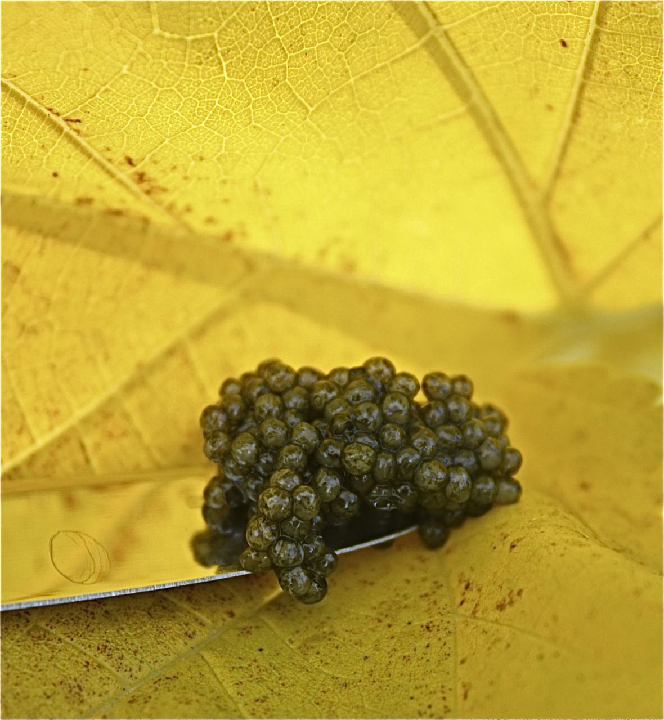 A word about caviar: while the name caviar can be used to describe the roe of almost any fish that produces eggs ~ salmon, steelhead, trout, lumpfish or whitefish ~ anyone who's tasted roe from the wild sturgeon living in the Caspian or Black Sea knows Beluga, Ossetra or Sevruga are to lumpfish what cashmere is to boiled wool. That’s not to say that domestic caviar isn’t a wonderful and affordable addition to any dish that calls out for an oceanic bite. But stay away from pressed products. No matter where they come from, no matter what size or shape the eggs, caviar needs to be fresh, to explode against your upper palate with a fresh briny snap.
A word about caviar: while the name caviar can be used to describe the roe of almost any fish that produces eggs ~ salmon, steelhead, trout, lumpfish or whitefish ~ anyone who's tasted roe from the wild sturgeon living in the Caspian or Black Sea knows Beluga, Ossetra or Sevruga are to lumpfish what cashmere is to boiled wool. That’s not to say that domestic caviar isn’t a wonderful and affordable addition to any dish that calls out for an oceanic bite. But stay away from pressed products. No matter where they come from, no matter what size or shape the eggs, caviar needs to be fresh, to explode against your upper palate with a fresh briny snap.
 Omelet with Caviar Crème Frâiche is the last Dish of the Week for the Blog this year. Looking back at the dishes we documented in 2011, we hope we managed a few Aha! moments that bridged the gap between the professional and the home cook, showcasing superior ingredients while finding the key to dishes that were both simple and elegant. No matter how labor intensive they were, and some of them were doozies, our hope was to delight your eye with finished dishes where the chef’s hand was all but invisible, his talent subsidiary to taste. The best dishes we eat in any year are usually the ones that don’t shout so much as fervently whisper, overwhelming neither the palate nor the stomach.
Omelet with Caviar Crème Frâiche is the last Dish of the Week for the Blog this year. Looking back at the dishes we documented in 2011, we hope we managed a few Aha! moments that bridged the gap between the professional and the home cook, showcasing superior ingredients while finding the key to dishes that were both simple and elegant. No matter how labor intensive they were, and some of them were doozies, our hope was to delight your eye with finished dishes where the chef’s hand was all but invisible, his talent subsidiary to taste. The best dishes we eat in any year are usually the ones that don’t shout so much as fervently whisper, overwhelming neither the palate nor the stomach.
Because we think the first meal of the New Year should be as memorable as the last, Early Bird's Omelet with Caviar Crème Frâiche will be one of the stars of our New Year’s Day Brunch Menu this Sunday, Janurary 1, 2012. On the drink side, for those of us who intend to party hard on New Year's Eve, the New Year's Day menu also brings back two classic Barndiva hangover cures: Bite the Dog and the Fernet Old Fashioned.
2011: The People Who Made It All Possible
It takes a lot of hard work (not to mention talent) to keep Barndiva going all year. Even more to keep it growing in the ways we care about most. At the end of the day, ironic as it may sound, great restaurants aren’t about food as much as they are about people. A lot of people ~ from the farmers and ranchers who grow and raise our ingredients, through the chefs of various stations who clean, cut, cook and plate, to the servers, hostesses and bartenders who deliver our drinks and food to the table with a skilled flourish that honors the work and love that's goes into every dish.
 We are truly blessed to have talent in abundance here at Barndiva. And it isn’t just the professionalism our purveyors and staff have that is ultimately so remarkable; it's the way they rock it, with an abundance of humor and good will.
We are truly blessed to have talent in abundance here at Barndiva. And it isn’t just the professionalism our purveyors and staff have that is ultimately so remarkable; it's the way they rock it, with an abundance of humor and good will.
 2011 was a great year for us, hard but truly wonderful. We have always had great heart for what we do but I’m the first to admit our best intentions haven't always gone hand in hand with perfect timing. If you’ve eaten here in the past year, or shared the excitement of an event, you know we are on a roll.
2011 was a great year for us, hard but truly wonderful. We have always had great heart for what we do but I’m the first to admit our best intentions haven't always gone hand in hand with perfect timing. If you’ve eaten here in the past year, or shared the excitement of an event, you know we are on a roll.
None of us knows what lies ahead this year. It's hard to ignore the fact that most mornings the world outside feels like it is going to hell in a handbag. There’s too much greed and fear around, coupled with the uneasy but pervasive message from on high that even if you do a good job in life, an honest job, you’re going to end up with the short end of the stick. Don’t believe it. There are wonderful things happening all around us, they just need to be acknowledged and supported. Fought for. Enjoyed. Joy should be at the heart of what gets us out of bed every morning ~ even if some days it's just the fumes of the possible. But joy is like a fire, it needs kindling to get started. Constant feeding to keep it going.
 So here's a Big Thank You to our kindling makers and fire builders of 2011 ~ starting with the singular farms and ranches that have supplied Barndiva throughout the year, especially the ones (you know who you are) that do not mind bringing in only one or two crops that meet Ryan’s exacting standards. Special shout out to Bonnie at Dragonfly who lets me fill the barn with the most impossibly beautiful blooms from her gardens while never failing to kick me in the ass when I need it; Alex and all the guys at Mix Gardens, Myrna and Earl at Early Bird's Place, Vidal and Daniel (and of course Lukka) at the farm, Lou and Susan Preston for writing the manual on how to raise happy pigs and sheep and besides great wine, produce some of the best olive oil around.
So here's a Big Thank You to our kindling makers and fire builders of 2011 ~ starting with the singular farms and ranches that have supplied Barndiva throughout the year, especially the ones (you know who you are) that do not mind bringing in only one or two crops that meet Ryan’s exacting standards. Special shout out to Bonnie at Dragonfly who lets me fill the barn with the most impossibly beautiful blooms from her gardens while never failing to kick me in the ass when I need it; Alex and all the guys at Mix Gardens, Myrna and Earl at Early Bird's Place, Vidal and Daniel (and of course Lukka) at the farm, Lou and Susan Preston for writing the manual on how to raise happy pigs and sheep and besides great wine, produce some of the best olive oil around.
 Thank you to our incredible Kitchen Staff (special shout out to The Incredible Flying Wycoff Brothers, the irrepressible Pancho, Manny, Danny, Octavio, Shale, and expediter extraordinaire Katie) and our charming and informed Front of House, now lead by the eminently able and urbane Bennett and the lovely Catherine.
Thank you to our incredible Kitchen Staff (special shout out to The Incredible Flying Wycoff Brothers, the irrepressible Pancho, Manny, Danny, Octavio, Shale, and expediter extraordinaire Katie) and our charming and informed Front of House, now lead by the eminently able and urbane Bennett and the lovely Catherine.
To Dawid, who has taken the gallery on by storm, and to Amber, who helped Lukka fulfill all our wedding couple's dreams. And last, but hardly least, my assistant and new mum K2, who keeps the blog (and the website) fresh, even when Chef and I threaten to run out of steam.
All of us here wish you a New Year that’s easy on the eyes, fulfilling and just plain filling ~ some of which we hope you will do here. Thank you for reading Eat the View this year (we know a lot vies for your attention) and for your support in person, here in the restaurant, the gallery, and at our weddings. Your continued health and well being matters greatly to us. Have an exciting year. Keep the home fires burning.
Salute!

All text Jil Hales. All photos Jil Hales and Dawid Jaworski (unless otherwise noted).
 Continuing on from last week’s (Meyer Lemon) preserving session, we come to one of Chef's favorites ~ Pickled Pearl Onions ~ which pair beautifully with many a savory starter or entrée. Not to mention being an indispensable component to a great Bloody Mary.
Continuing on from last week’s (Meyer Lemon) preserving session, we come to one of Chef's favorites ~ Pickled Pearl Onions ~ which pair beautifully with many a savory starter or entrée. Not to mention being an indispensable component to a great Bloody Mary. Preserving doesn't get much easier than this: the only thing fiddly about pickling pearl onions is peeling the papery outer skin and membrane to get to the inner bulb. Pickling spices tend to work best when peppercorns, fennel seeds and a wide flake salt like Maldon are in play. Use firm, good quality onions. Once you are past the peeling stage and have chosen your spices, all you need is a clean jar and equal parts vinegar and sugar … that's it.
Preserving doesn't get much easier than this: the only thing fiddly about pickling pearl onions is peeling the papery outer skin and membrane to get to the inner bulb. Pickling spices tend to work best when peppercorns, fennel seeds and a wide flake salt like Maldon are in play. Use firm, good quality onions. Once you are past the peeling stage and have chosen your spices, all you need is a clean jar and equal parts vinegar and sugar … that's it. Depending on what he will be serving them with, Ryan chooses a vinegar that will push or pull on the pearl's mild bulby onion taste. With the return of duck confit this week he used a good quality champagne vinegar. Ready to eat after 24 hours, these vibrant pink pickled onions will keep for months. Depending, of course, on how many times you find yourself reaching into the fridge for them to garnish a Bloody Mary.
Depending on what he will be serving them with, Ryan chooses a vinegar that will push or pull on the pearl's mild bulby onion taste. With the return of duck confit this week he used a good quality champagne vinegar. Ready to eat after 24 hours, these vibrant pink pickled onions will keep for months. Depending, of course, on how many times you find yourself reaching into the fridge for them to garnish a Bloody Mary. Anyone who tells you there is only one definitive recipe for the Bloody Mary is either a fool or a liar. This is not all down to the fact that for all its sunny charm, it's a surprisingly complex cocktail. Depending upon your MO for ordering it ~ whether you are coming into brunch still wet from the gym or just out of bed with a headache you acquired getting up to no good the night before, chances are you’re going to taste something quite different every time you order one.
Anyone who tells you there is only one definitive recipe for the Bloody Mary is either a fool or a liar. This is not all down to the fact that for all its sunny charm, it's a surprisingly complex cocktail. Depending upon your MO for ordering it ~ whether you are coming into brunch still wet from the gym or just out of bed with a headache you acquired getting up to no good the night before, chances are you’re going to taste something quite different every time you order one. As for the garnish it shouldn't be an afterthought ~ a sad bit of celery just doesn't cut it. The entry point to a great Bloody Mary is a juicy olive, pickled pearl onion, bit of shaved carrot, baby radish and a wedge of lime ~ fresh, bright, beautiful color and crunch that signals the transition to sharply sour, salty and hot. Close your eyes and you should be able to imagine sitting in a beautiful garden on a sunny day surrounded by ripening tomatoes. Wherever you actually are, there are worse ways to start your Sunday.
As for the garnish it shouldn't be an afterthought ~ a sad bit of celery just doesn't cut it. The entry point to a great Bloody Mary is a juicy olive, pickled pearl onion, bit of shaved carrot, baby radish and a wedge of lime ~ fresh, bright, beautiful color and crunch that signals the transition to sharply sour, salty and hot. Close your eyes and you should be able to imagine sitting in a beautiful garden on a sunny day surrounded by ripening tomatoes. Wherever you actually are, there are worse ways to start your Sunday.









